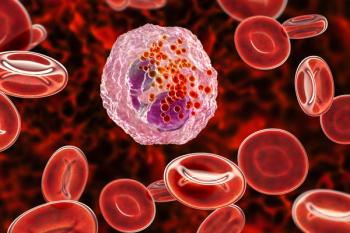Exposure to residential greenness during pregnancy increased the risk of the development of asthma, according to results of a study published in Environmental Research. The effects were strongest during the spring season and in the third trimester of pregnancy, suggesting that the season and trimester during exposure to greenness are associated with the development of asthma.
Investigators of the study aimed to determine if there was an association between residential greenness during pregnancy and early life with the development of asthma up to age 27 years. They focused in on the trimester-specific and seasonal affects, according to the study authors.
In the study, children who were born between January 1, 1985, and March 31, 1990, were included from Espoo in Southern Finland. Parents filled out a consent form and a questionnaire. A follow-up was conducted starting in 1997 and continued for 6 years, according to the study authors. The outcome of interest was the onset of asthma in the follow-up period.
Investigators measured greenness using the mean normalized difference vegetation index (NDVI) within 100 m, 300 m, 500 m, and 1000 m of residence during pregnancy and 2 years of life during spring and summer.
Investigators included 2568 individuals in the study who were 51.1% male, 73.9% were medium or high income, 85.8% of women did not smoke during pregnancy, and 94.9% were not exposed to second-hand smoke during pregnancy. Investigators reported that the incidence of asthma at 5.4% up to 6 years, 10.7% up to 12 years, and 14.7% up to 27 years of age.
According to the results of the study, the risk of asthma by age 6 increased when there was an increase in residential greenness in the spring during pregnancy, with an adjusted hazard ratio of 3.72 per 1 unit-month increase of cumulative NDVI within 300 m of residence. The study authors said that children whose mothers were exposed to the highest quartile of cumNDVI in the spring had a significant increased risk of asthma between 0 and 6 years when compared to the third, second, and first quartiles. The investigators found a similar pattern for asthma from 12 to 27 years of age.
Furthermore, they found the risk by age 6 was also associated with greenness in the summer during pregnancy, but the association was weaker than those found in the spring. The study authors reported that there was no consistent evidence that associated NDVI in early childhood with the risk of asthma.
Key Takeaways
- Higher greenness levels during spring pregnancy were associated with an increased risk of asthma by age 27, especially within 300 meters of residence.
- Greenness exposure during the third trimester also showed a connection to asthma risk, though weaker than spring exposure.
- Researchers suspect higher allergen concentrations associated with green spaces might be involved.
Additionally, 2 sub analyses were conducted for allergic and non-allergic asthma, with NDVI exposure in the spring during pregnancy having a greater effect on allergic asthma up to 6 years of age, according to the results.
However, the effect was somewhat weaker by ages 12 and 27 years. Further, they said this risk was significantly related to the third trimester with an adjusted hazard ratio of 2.37. The effects for the third trimester were also weaker and non-significant for ages 12 and 27 years old.
The study authors noted that the mechanism by which this asthma risk increases was not fully understood, but they believe its likely to be related to high allergen concentrations.
Reference
Rantala AK, Paciência I, Antikainen H, et al. Residential greenness during pregnancy and early life and development of asthma up to 27 years of age: The Espoo Cohort Study. Environ Res. 2024. doi:10.1016/j.envres.2024.118776








































































































































































































